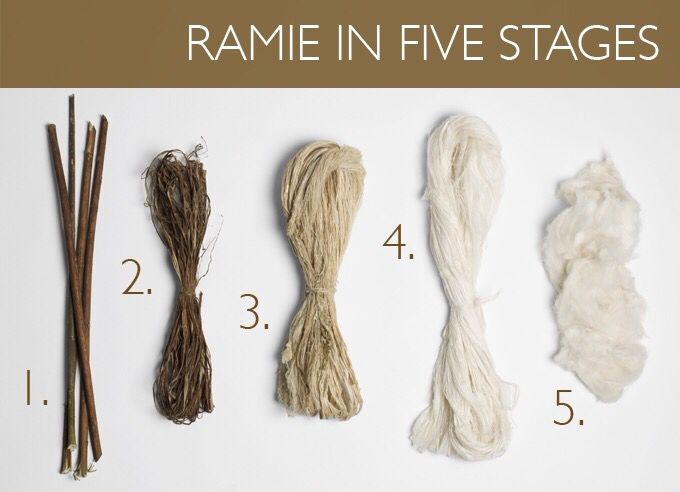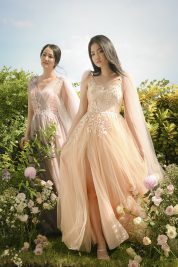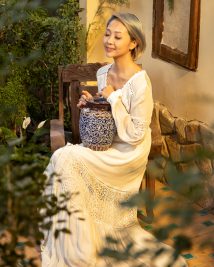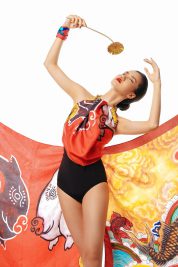DISCOVER fibromyalgia – POTENTIAL BEAUTIFUL BEAUTY
Hemp, as the name implies, conjures up a line of rough, rough materials, rarely considered a precious material in the textile industry. It seems that hemp only attracts the attention of those who specialize in making accessories such as bags, bags, ropes…
However, do not be indifferent to the thorns! The potential features and beauty of hemp fiber will probably surprise many people, including those working in the textile industry!
First about the name, which is very confusing. When researching about hemp, the search results often lead to hemp, but forget about ramie, the special thing is that the properties of these two fibers are completely different.


The appearance of the hemp plant closely resembles a dangerous plant
Hemp provides us with a fiber with high strength and low stretch, good resilience, good moisture recovery at 12%, breathable and also flame retardant and antibacterial. Since the 18th century, hemp has been widely used in the British shipping industry to make ropes, sails, and sacks. In terms of the environment, hemp is a plant that is easy to recycle, easy to grow on a large scale, and easier to care for than cotton – the king of textile fibers.
Admittedly, however, hemp fiber, due to its low elasticity, is quite stiff when used as a fabric. The simplest solution is to mix hemp fiber with other fibers to enhance, add properties, make the fabric more flexible and drape while keeping the inherent qualities of hemp. In recent years, with the development of the material industry and technical textile products, hemp has become a valuable source of materials for making reinforcing and reinforcing materials. Perhaps, many people have been riding in their beloved cars without knowing that in their cars there are hemp fibers lurking in the form of non-woven fabrics to make background materials, interior materials. cars and many more applications. Tiny but resilient hemp can completely replace fiberglass when applied as a reinforcement material at a much more affordable cost.

At this point, people will wonder if a fiber has such many advantages that it has not been widely used until now, even entangled with a farming ban in many countries for a long time. It all stems from the confusion between hemp with a “dangerous” plant, which is marijuana. If you only look at the leaves and the appearance of the plant, this confusion is completely understandable because they are the same cannabis family, however, hemp and marijuana (marijuana) are very different in the ratio of Tetrahydrocannabinol (THC) and lead Cannabinoids are one of a group of chemical compounds that alter the release of neurotransmitters in the brain. This unsolved claim has made the cultivation of hemp illegal (in the US since 1937 under the Marihuana Tax Act). According to Forbes, it was only in 1970 that hemp was “untied” when it was classified as a Class 1 banned substance, and it was not until 2018 that the US Farm bill opened the door to hemp cultivation again. Some companies like Envirotextiles are allowed to import hemp fibers grown in other countries for industrial purposes. Brands such as Recreator, Hoodlamb Hemp Tailors, Hempy’s, Jungmaven, Wama lingerie, and Tact & Stone are leading hemp fashion brands. Hemp even appealed to famous fashion houses like Stella McCartney and Eileen Fisher. Former Project Runway designer Korto Momolu presents a collection of 26 patterns in sustainable hemp, jute, linen and cork. In early 2019, Levi’s introduced the first “hemp” denim jeans in collaboration with Outerknown under the Wellthread x Outerknown line.

In contrast to hemp, the fate of green hemp (Ramie) is somewhat more peaceful. Blue ramie is not new, having even been used in mummy cloth in Egypt between 5000 and 3000 BC, and has been cultivated in China for centuries. Gai Ramie (Boehmeria nivea) is also known as “Chinese grass”. Stinging nettle is a perennial plant in the Nettle family or Nettle family, which can be harvested up to 6 times a year.
Spinach has been used since 5000 – 3000 BC
It few sounds far-fetched, but perhaps all of us have ever eaten, or known gai cake or hemp leaf cake, but people would have guessed that hemp itself can provide us with a tough textile fiber. , about 8 times stronger than cotton, is a cellulose-based fiber that is white and smooth like silk. Furthermore, green ramie fiber is also resistant to bacteria, mold, and insects, resistant to alkalis, difficult to rot, resistant to light and insect attack, extremely absorbent, comfortable and easy to use. Extremely resistant to wear. Although beautiful and shiny like silk, blue hemp is dyed quite easily, increases durability in wet conditions and is especially resistant to high temperatures during washing, has very good dimensional stability, making it easy to care for. This precious fabric is relatively easy compared to the difficult silk silk. Compared with that advantage, a few minor such as slightly less elastic, easy to crease, weak wear resistance may also be difficult to prevent ramie cloth from appearing in the textile village as a precious material. not difficult at all.
However, the cost and processing of green ramie fiber is quite expensive. Like all libe fibres, it is quite difficult to extract and clean the ramie, from beams, peeled, stamped, sometimes steamed, desiccated and chemically treated. Separating the fibers from the adhesive pectins requires time and good processing to keep the strength and color of the fibers. Spinning ramie fibers is also quite difficult because the fibers are brittle with low elasticity, the yarn has a high hairiness, so weaving is not easy, not to mention the natural bonding ability between the fibers in the yarn is not high. Whether or not ramie fiber is widely used depends much on the improvement of mechanical and chemical processes in processing technology so that the hardships of fiber processing do not hinder the way for this beautiful fiber to come close. more with the public.
The cost and process of processing green hemp fiber is quite expensive
Because of its precious, white and lustrous properties, ramie is often blended with cotton fibers to create fabrics used for clothing, tablecloths, napkins and handkerchiefs, and fabrics for furniture. family (upholstery, canvas). In addition to the clothing industry, hemp is used in fishing nets, canvas, upholstery, straw hats and fire hydrants. With the flow of technology, hemp, like hemp, has begun to be selected as a reinforcing material, composite material, cement reinforcement and many other promising technical textiles.
The world’s leading ramie producers are China, Taiwan, South Korea, the Philippines and Brazil. Surprisingly and also very happy, Vietnam has had the first enterprise to produce hemp yarn with the proud name “Viramie” of the An Phuoc group with the AP1 blue hemp variety, with the raw material area stretching over a whole area. provinces and can provide a high quality hemp yarn, yarn count ranges from 36Nm to 48Nm. Blue hemp fabric appeared at Vietnam Fashion Week with the participation of many famous fashion houses. Green thorns have not only potential, but promise many applications in the near future in the fashion industry as well as other industries.

Hemp, which turns out to be not “thorny” at all, from hemp to hemp, are precious fibers that are not rare, easy to cultivate, and have excellent environmental properties. Just by understanding the value of fiber and exploiting it in the most reasonable way, in the very near future, we can enjoy beautiful gai cakes on the dining table covered with durable ramie fabric, and diners then wear the most beautiful linen dresses and shirts, the side of the room has a “view” of cool green thorn fields.
The hidden beauty of thorns will soon be revealed to us.
Post: Assoc. Prof. Dr. Bui Mai Huong – Lecturer at Ho Chi Minh City University of Technology





















